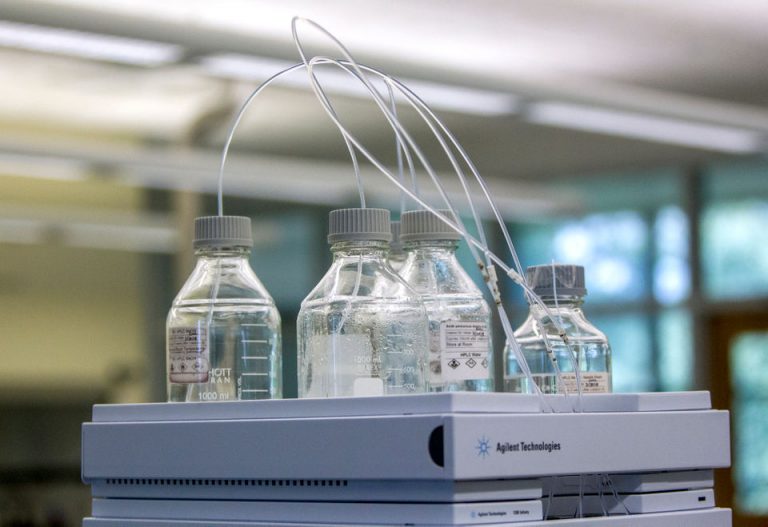Curbing the use of ‘forever’ chemicals
By Karen Feldscher | Harvard School of Public Health | July 18, 2019

Read full interview by Karen Feldscher (Harvard School of Public Health)
“July 18, 2019 – Philippe Grandjean is an adjunct professor of environmental health at Harvard Chan School who studies per- and polyfluoroalkyl substances (PFASs)—man-made chemicals used in products ranging from carpets to nonstick cookware to firefighting foams—and is co-director of STEEP (Sources, Transport, Exposure & Effects of PFASs). PFASs are known as ‘forever chemicals’ because they persist for years in the environment and in people’s bodies, and they’ve been linked with serious health problems.
Q: What are the most recent findings regarding PFASs, and what are your major concerns about these chemicals?
A: Our research has shown that toxic effects can occur at background levels of exposures—the amounts that most people are exposed to. Now, new research by the National Toxicology Program suggests that even lower exposures can lead to adverse responses. The research, described at a recent PFAS conference co-hosted by STEEP, found that perfluorooctanoic acid, or PFOA—a type of PFAS used for nonstick pans and waterproof raingear—was associated with the development of pancreatic cancer in a rodent model. When the researchers developed a dose-response assessment, they found that pancreatic tumors developed even at very low concentrations of PFOA, suggesting that the lifetime human exposure limit for this type of PFAS should be only 0.1 parts per trillion. But the EPA’S current guideline, which isn’t even legally binding, is 70 parts per trillion—700-fold too high.
Of the studies I’ve done on PFAS exposure, the most important outcome showed that children with elevated levels of PFAS in their blood don’t respond as well to scheduled routine vaccinations—they have a lowered immune response and may not be properly protected. In the current measles outbreak, some cases have occurred among kids that were vaccinated—suggesting that there is vaccine failure going on. While we don’t yet have the evidence, it is a possibility that PFAS exposure has weakened the effect of vaccinations.
My colleague Qi Sun, associate professor in the Department of Nutrition, and I have looked at other potential health effects of PFASs. One study found a very clear and statistically significant association between PFASs and risk of type 2 diabetes. Another found that PFASs may interfere with body weight regulation and metabolism. There are also studies that show associations between PFASs and elevations in lipids in the blood, suggesting cardiovascular risks. So, with all of these studies, we’re talking about real public health dangers that need to be addressed…
Q: Are governments in Europe and the U.S. taking any action to regulate PFASs?
A: The Council of EU Ministers recently concluded that the European Commission should generate a joint EU strategy on PFASs, treating all the many individual compounds as a group and recommending that they be approved only for essential uses. This means that two commonly used PFASs, such as PFOA and PFOS [perfluorooctane sulfonic acid], cannot be swapped out for other PFASs, except for uses considered ‘essential.’ This is being done because the entire class of chemicals is suspected of having similar properties in regard to environmental dissemination and human health…
In the U.S., older PFASs are being phased out but they are being substituted with similar PFASs that have not yet been tested in any detail and are therefore not regulated.
There are some legislative efforts underway in Congress to address the use of PFASs, and these are of course highly beneficial and appropriate. For example, one proposal would require a number of actions, including the stipulation that the EPA set nationwide drinking water regulations for PFOA and PFOS. But the proposal would give the EPA two more years to address what are termed ‘unreasonable risks’ from these chemicals, which is generous, as EPA has been aware of the growing problems for a very long time. It’s also not clear if President Trump will approve these congressional proposals. He recently threatened to veto a bill that would phase out the military’s use of firefighting foams that contain PFASs and that has led to the contamination of vast groundwater reservoirs. A recent CNBC video I appeared in gives a helpful overview of how this problem came to be and what’s being done about it.
States continue to be impatient and have developed their own approaches to control what some call the PFAS ‘crisis.’ Most recently, New Hampshire has announced new water limits for the four major PFASs, with limits for two of those, PFOS and PFOA, about five-fold lower than the EPA guidelines. At least six other states have also set limits below EPA guidelines.
Q: A recent headline called chlorpyrifos ‘the most dangerous pesticide you’ve never heard of.’ Is this pesticide as hazardous as PFASs? Are there efforts underway to curtail its use?
A: Chlorpyrifos is the most commonly used pesticide in the U.S. and the European Union (EU). Due to residues in non-organic food, most of us are regularly exposed to this chemical. Although this is not a ‘forever chemical’ like PFASs, it has been associated with brain damage in children even at very low exposure levels…
Currently, chlorpyrifos is banned in several EU countries but still shows up in those countries because goods move freely across national borders. Chlorpyrifos is likely to be banned in the EU in the near future, but farmers may turn to a less strictly regulated derivative called chlorpyrifos-methyl, which seems to be just as toxic. In the U.S., chlorpyrifos was scheduled for phaseout during the Obama administration, but the Trump administration has blocked that effort since 2017. After a legal challenge, the EPA is now under court order to decide this month whether to ban the pesticide. In the meantime, three states—Hawaii, California, and New York—have banned it.”
This content provided by the PFAS Project.
Topics: